
Polygonum is a genus of about 130 species of flowering plants in the buckwheat and knotweed family Polygonaceae. Common names include knotweed and knotgrass. In the Middle English glossary of herbs Alphita, it was known as ars-smerte. There have been various opinions about how broadly the genus should be defined. For example, buckwheat has sometimes been included in the genus as Polygonum fagopyrum. Former genera such as Polygonella have been subsumed into Polygonum; other genera have been split off.

Fallopia is a genus of about 12 species of flowering plants in the buckwheat family, often included in a wider treatment of the related genus Polygonum in the past, and previously including Reynoutria. The genus is native to temperate and subtropical regions of the Northern Hemisphere, but species have been introduced elsewhere. The genus includes species forming vines and shrubs.

Polygonum arenastrum, commonly known as equal-leaved knotgrass, is a summer annual flowering plant in the knotweed family Polygonaceae. Other common names include common knotweed, prostrate knotweed, mat grass, oval-leaf knotweed, stone grass, wiregrass, and door weed, as well as many others. It is native to Europe and can be found on other continents as an introduced species and a common noxious weed. Knotweed was first seen in North America in 1809 and is now seen across much of the United States and Canada.
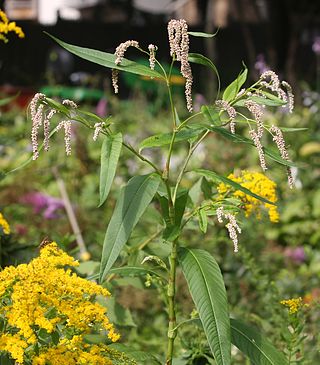
Persicaria lapathifolia, known as pale persicaria, is a plant of the family Polygonaceae. It is closely related to Persicaria maculosa and as such is considered a weed in Britain and Europe. Other common names for the plant include pale smartweed, curlytop knotweed, and willow weed. It is a species complex made up of a great many varying forms, sometimes considered varieties. The environment also has a strong influence on the morphology of an individual plant.

Polygonum aviculare or common knotgrass is a plant related to buckwheat and dock. It is also called prostrate knotweed, birdweed, pigweed and lowgrass. It is an annual found in fields and wasteland, with white flowers from June to October. It is widespread across many countries in temperate regions, apparently native to Eurasia, naturalized in temperate parts of the Southern Hemisphere.
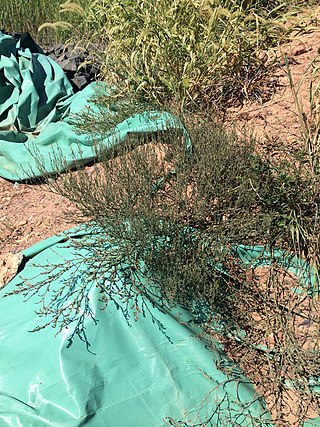
Polygonum ramosissimum is a North American species of herbaceous annual plants in the buckwheat family, widespread across much of Canada and the United States, where it is commonly called bushy knotweed. It is susceptible to downy mildew caused by the oomycete species Peronospora americana.
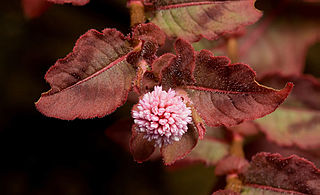
Persicaria capitata, the pink-headed persicaria, pinkhead smartweed, pink knotweed, Japanese knotweed, or pink bubble persicaria, is an Asian species of plants in the genus Persicaria within the buckwheat family. It is native to Asia and grown as an ornamental in other countries. It has become naturalized in Australia, South Africa and a few scattered locations in the Americas.
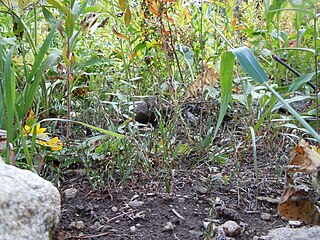
Polygonum douglasii is a species of flowering plant in the knotweed family known by the common name Douglas's knotweed. It is native to much of northern and western North America, where it can be found in many types of habitat, including disturbed areas. It has been found in Canada from British Columbia north to Yukon and east as far as Québec, and in the United States as far south as California, New Mexico, Iowa, and New York.
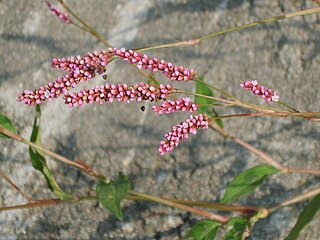
Persicaria longiseta is a species of flowering plant in the knotweed family known by the common names Oriental lady's thumb, bristly lady's thumb, Asiatic smartweed, long-bristled smartweed, low smartweed, Asiatic waterpepper, bristled knotweed, bunchy knotweed, and tufted knotweed. It is native to Asia, and it is present in North America and Europe as an introduced species and often a weed.

Koenigia phytolaccifolia is a species of flowering plant in the knotweed family, known by the common name poke knotweed.

Koenigia polystachya is a species of flowering plant in the knotweed family, known by the common names Himalayan knotweed and cultivated knotweed. It has several regularly used synonyms, including Polygonum polystachyum, Aconogonon polystachyum and Persicaria wallichii.

Polygonum achoreum, common names Blake's knotweed, leathery knotweed or striate knotweed, is a North American species of plants in the buckwheat family. It is widespread across much of Canada and the northern United States.
Polygonum austiniae, common name Mrs. Austin's knotweed, is a plant species in the buckwheat family. It is native to western Canada and the western United States, from Alberta and British Columbia south as far as California, Nevada, and Wyoming.
Polygonum cascadense is a species of flowering plant in the buckwheat family known by the common name Cascade knotweed. It has been found only in the State of Oregon in the northwestern United States, in the Cascades and in the Blue Mountains.
Polygonum engelmannii, common name Engelmann's knotweed, is a North American species of plants in the buckwheat family. It is native to western Canada and the western United States, usually at high elevations in the mountains. It has been found in Alberta, British Columbia, Idaho, Montana, Wyoming, Nevada, Utah, and Colorado.
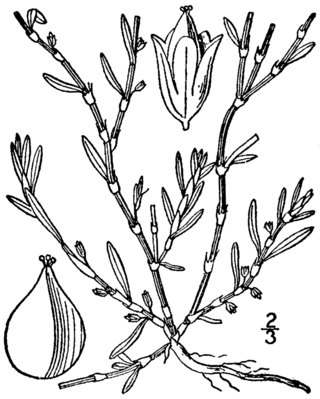
Polygonum glaucum, common names seabeach knotweed and seaside knotweed, is a North American species of plant in the buckwheat family. It grows on the Atlantic Coast of the United States, from Alabama to Massachusetts, including in salt-water inlets such as Chesapeake Bay and the Hudson River.
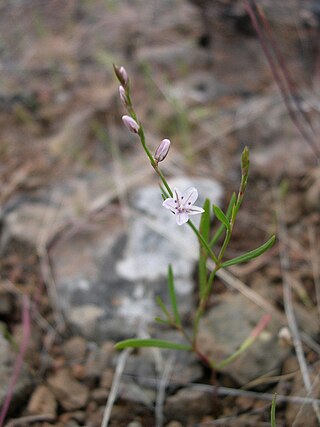
Polygonum majus is a North American species of flowering plant in the buckwheat family known by the common name wiry knotweed. It grows in the western United States and western Canada, from British Columbia south as far as the Sierra Nevada of northwestern Inyo County in California, east as far as Montana. Knotweed is a spreading, wiry annual weed that rarely grows higher than a few inches. The leaves are tiny, oblong, bluish-green, and 14 inches broad and 1 inch long. The flowers are tiny and unobtrusive, whitish-green in colour, and appear in the leaf axils in the fall. Knotweed may grow into a dense mat with a diameter of up to three feet, strangling out ideal grass and plants. The branches of this evergreen plant form a strong, wiry mat that reaches barely a few centimeters above the earth. They appear constantly, and gardeners are always fighting them.
Polygonum patulum, called tree hogweed, is a species of flowering plant in the knotweed family. It is native to the Mediterranean region, eastern Europe, the Caucasus, Siberia, Central Asia, Mongolia, and the Province of Xinjiang in northwestern China. It has also become sparingly naturalized in scattered locations in Australia and North America.
Polygonum spergulariiforme is a North American species of flowering plants in the buckwheat family known by the common name spurry knotweed or fall knotweed. It grows in western Canada and the western United States.
Polygonum utahense, the Utah knotweed, is an unresolved name for a putative North American species of plants in the buckwheat family. It has been found only in the States of Utah and Arizona in the southwestern United States.














